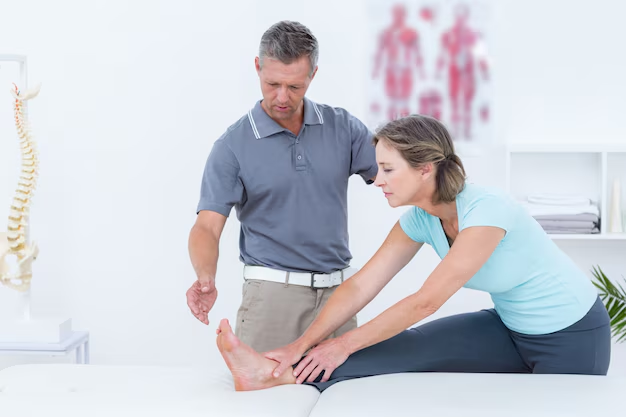Recognizing Arthritis: Signs and What to Consider
Arthritis can sneak into your daily life under the guise of normal aches and pains, but at what point should you pause to consider whether these discomforts are more than just temporary setbacks? Understanding the indicators of arthritis early on allows you to adapt and manage these symptoms effectively, making daily life more manageable. In this comprehensive guide, we'll walk you through the essential aspects of recognizing arthritis, providing you with knowledge that empowers without diagnosing or prescribing any medical interventions.
What is Arthritis?
Arthritis isn't just a single ailment—it's an umbrella term covering over a hundred different conditions. These conditions primarily affect the joints, causing symptoms that vary in severity and impact. Osteoarthritis and rheumatoid arthritis are the most common types, but other forms include gout, lupus, and psoriatic arthritis.
Types of Arthritis
- Osteoarthritis (OA): Often associated with aging, OA results from the wear and tear of cartilage.
- Rheumatoid Arthritis (RA): An autoimmune disorder where the body's immune system attacks the joints.
- Gout: Characterized by sudden, severe attacks of pain, often in the big toe, caused by excess uric acid.
- Psoriatic Arthritis: Occurs in some people who have psoriasis—a condition that features red patches of skin topped with silvery scales.
- Lupus: A complex autoimmune condition that can affect multiple organs, including the joints.
Recognizing the Symptoms
Understanding the symptoms can better prepare you for discussions with healthcare providers. Symptoms might present differently depending on the type of arthritis, but some are quite common across different forms.
Common Warning Signs
- Persistent Joint Pain: Pain that lingers, worsens, or becomes more frequent.
- Swelling: Joints may appear larger than usual, caused by inflammation.
- Stiffness: Especially in the morning or after sitting for long periods.
- Difficulty Moving Joints: Experiencing limited range of motion.
- Redness and Warmth: Skin around joints becomes red and warm to the touch.
When to Take Notice
If these symptoms persist for more than a few weeks or significantly affect your daily activities, it might be wise to seek a professional evaluation. Recognizing and documenting the frequency and intensity of your symptoms can be a crucial part of the assessment process.
Exploring Potential Causes
Understanding what might trigger or exacerbate arthritis is a useful step. While some factors are unavoidable, others can be managed or mitigated.
Risk Factors
- Age: The risk increases with age, especially for osteoarthritis.
- Family History: Genetics can predispose you to certain types of arthritis.
- Gender: Many types of arthritis are more common in women.
- Previous Joint Injuries: Past injuries may develop arthritis later.
- Obesity: Extra weight adds stress to joints, particularly hips, knees, and spine.
Lifestyle Influences
Although you can't change your age or family history, lifestyle choices significantly influence arthritis risk.
- Maintaining a healthy weight reduces joint stress.
- Engaging in regular physical activity keeps joints flexible.
- A balanced diet rich in anti-inflammatory foods can be beneficial.
Diagnosing Arthritis: What to Expect
If arthritis symptoms seem to match your experiences, seeking a formal diagnosis is the next logical step. Medical evaluations provide clarity and guidance tailored to your situation.
Preparing for the Appointment
Ensure that you provide health care professionals with comprehensive details, including:
- Symptom Log: Document frequency, intensity, and duration of symptoms.
- Medical History: Highlight past injuries or family history of arthritis.
- Lifestyle Information: Share daily activity levels and typical diet.
Diagnostic Tools
The diagnostic process often involves a combination of methods:
- Physical Examination: Evaluating joint movement and appearance.
- X-rays or Imaging Scans: Detecting joint and cartilage changes.
- Blood Tests: Checking for markers indicative of specific types.
- Arthrocentesis: Fluid withdrawal from joint space to analyze.
Living with Arthritis: Practical Insights
Receiving an arthritis diagnosis can be daunting, but it's the first step in effectively managing your symptoms. Thankfully, various strategies can help ease daily life.
Management Techniques
- Medication Options: Anti-inflammatory drugs and analgesics ease pain.
- Physical Therapy: Tailored exercises improve strength and flexibility.
- Joint Protection Techniques: Tools and aids reduce joint strain.
Emotional and Community Support
Adapting to life with arthritis involves emotional resilience. Finding supportive communities and mental health resources is incredibly beneficial.
- Support Groups: Connecting with others experiencing similar challenges.
- Mental Wellness: Managing stress through mindfulness and relaxation practices.
Making Informed Choices
- Stay informed about new developments in arthritis research.
- Engage in proactive communication with healthcare providers.
- Explore alternative therapies with professional guidance.
Empowering Your Journey
Understanding arthritis empowers you to take active steps in managing it effectively. Every journey is unique, requiring personalized strategies suited to individual lifestyles and needs.
Takeaway Tips:
- 📝 Keep a Symptom Diary: Document to assist healthcare discussions.
- 🤸♂️ Stay Active: Maintain mobility and strength with regular exercise.
- 🍽️ Eat for Your Joints: Opt for anti-inflammatory foods.
- 🧘♀️ Prioritize Mental Health: Manage stress through mindfulness and relaxation.
- 👥 Seek Support: Connect with communities for shared experiences and encouragement.
By equipping yourself with knowledge and seeking appropriate guidance, you can navigate the path of arthritis with confidence and clarity. Though it will require adaptation and perseverance, embracing these changes will help you maintain a fulfilling and active life.

Related Articles
- Are Bananas Bad For Arthritis
- Are Tomatoes Bad For Arthritis
- Can An Inflamed Nerve Cause Arthritis
- Can Arthritis Be Cured
- Can Arthritis Be Reversed
- Can Arthritis Become Septic After Infection From Injection
- Can Arthritis Cause Numbness
- Can Arthritis Cause Swelling
- Can Cracking Knuckles Cause Arthritis
- Can Cracking Your Knuckles Cause Arthritis